
Champagne Vouette et Sorbée
Champagne Vouette et Sorbée, Côte des Bars
If you would have predicted in 1986 that Buxières-sur-Acre, nestled in the hills south of the medieval town of Troyes, would be home to one of the most heralded récoltants in Champagne, you would have been greeted by two possible reactions: a blank stare or derision. A blank stare because few would know where to place Buxières on a map, and derision from those who could. It wasn’t necessarily Bertrand Gautherot’s plan either, as initially he continued to farm his family’s parcels conventionally, and he sold his grapes to large Champagne houses in the north. With an evolving respect for his terroir and concern for his young family, Bertrand set about declaring independence from the outdated echelle system and the negative pressure it places on growers. Inspired by friends Jérôme Prévost and Pierre Larmandier, he converted his vineyards to biodynamics and received certification from Demeter in 1998, releasing his first Champagne in 2001.
Located in the Côte des Bar, Bertrand’s estate is named after two of his lieu-dits: Vouette & Sorbée. Unlike the vineyards in the north of Champagne with their fine chalky soils, the Côte des Bar is more like Chablis – dense, rocky, Kimmeridgian and Portlandian limestone clay soils. Historically Pinot Noir was the dominant variety in this region, but Bertrand has been slowly expanding his plantings of Chardonnay. He farms about 5 hectares of vines divided among 6 lieux-dits with five of them located near his hometown of Buxières, and one in the neighboring village of Ville-sur-Acre. If asked, Bertrand will say that he is a farmer first and foremost and in addition to vines, he raises chickens and cattle and operates a nearly self-sustaining enclosed ecosystem.
Vouette is located immediately behind Bertrand’s house and along with Sorbée, these were Bertrand’s inheritance from his father. Vouette is a south-facing slope that transitions from Kimmeridgian limestone at the bottom to Portlandian at the top. Once planted with Pinot Noir, Bertrand replanted this site to Chardonnay after the 2014 vintage. It was part of the blend for Fidèle but will begin to show up in releases of the Blanc d’Argile sometime around 2020.
Sorbée is at the top of the hill where Vouette is situated and where the soils are entirely Portlandian. This is a more level site with a slight southwestern exposure. The Pinot Noir vines here are between 30 and 45 years old. For generations fruit grown here was used to make the family’s everyday drinking wine, so this site has never been commercially farmed.
Briaunes is Bertrand’s largest parcel of vines at 2 hectares. It has the same mix of Kimmeridgian and Portlandian limestone soils as Vouette but rather than having a southern exposure, it faces west. Despite the warmth of the afternoon sun, this is a cooler site, and one that retains moisture in the soils and it ripens quite late. These are younger vines and mostly Pinot Noir, but when Bertrand planted this site he added a small amount of Chardonnay. His experience of growing Chardonnay in Briaunes, combined with the success of the Blanc d’Argile, is what encouraged Bertrand to replant Vouette to Chardonnay in 2014. The Pinot Noir from Briaunes goes into the blend for Fidèle.
Named after a neighbor (Petit Remi), Tirmy is a vineyard of 30+ year old Pinot Noir that, like Briaunes, faces west. This site was once forested up to the late 1960’s when it was first planted. Fruit from Tirmy goes into the blend for Fidèle.
The only vineyard outside of the village of Buxière-sur-Acre is Chatel, which is located in the neighboring village of Ville-sur-Acre. This is a rocky site with plenty of broken chards of limestone that would look familiar to anyone who has visited Chablis. This is a sunny and dry site that is planted with Pinot Noir.
Bertrand’s range of wines are made from grapes that are harvested by hand, and fermented with indigenous yeasts in French oak barrels. Nothing is chapitalized, filtered or acidified. There are no cold macerations, and a small amount of SO2 is added right after the grapes are pressed. Bertrand prefers to make wines as transparent as possible so he doesn’t use liqueur de l’expedition. Fidèle is 100% Pinot Noir from various sites (mainly Fonnet and Briaunes) made with 5% reserve wine and showing the vinous and muscular style of his lieux-dits. Blanc d’Argile is 100% Chardonnay, mainly from Briaunes, and showcasing the piercing and mineral qualities of this site. Finally there is his rosé, Saignée de Sorbée, sourced from Sorbée where the Pinot ripens a few degrees higher. Vibrant in color and intensely flavored it is a rare example of this style of rosé in Champagne. Finally there is Textures, an experimental Champagne made from Pinot Blanc grown the the warmer lieu-dit of Fonnet. It is aged in both barrel and amphorae and shows the characteristically distinctive orange peel and minerality of the variety, but with bubbles.
These are mind-blowing Champagnes!


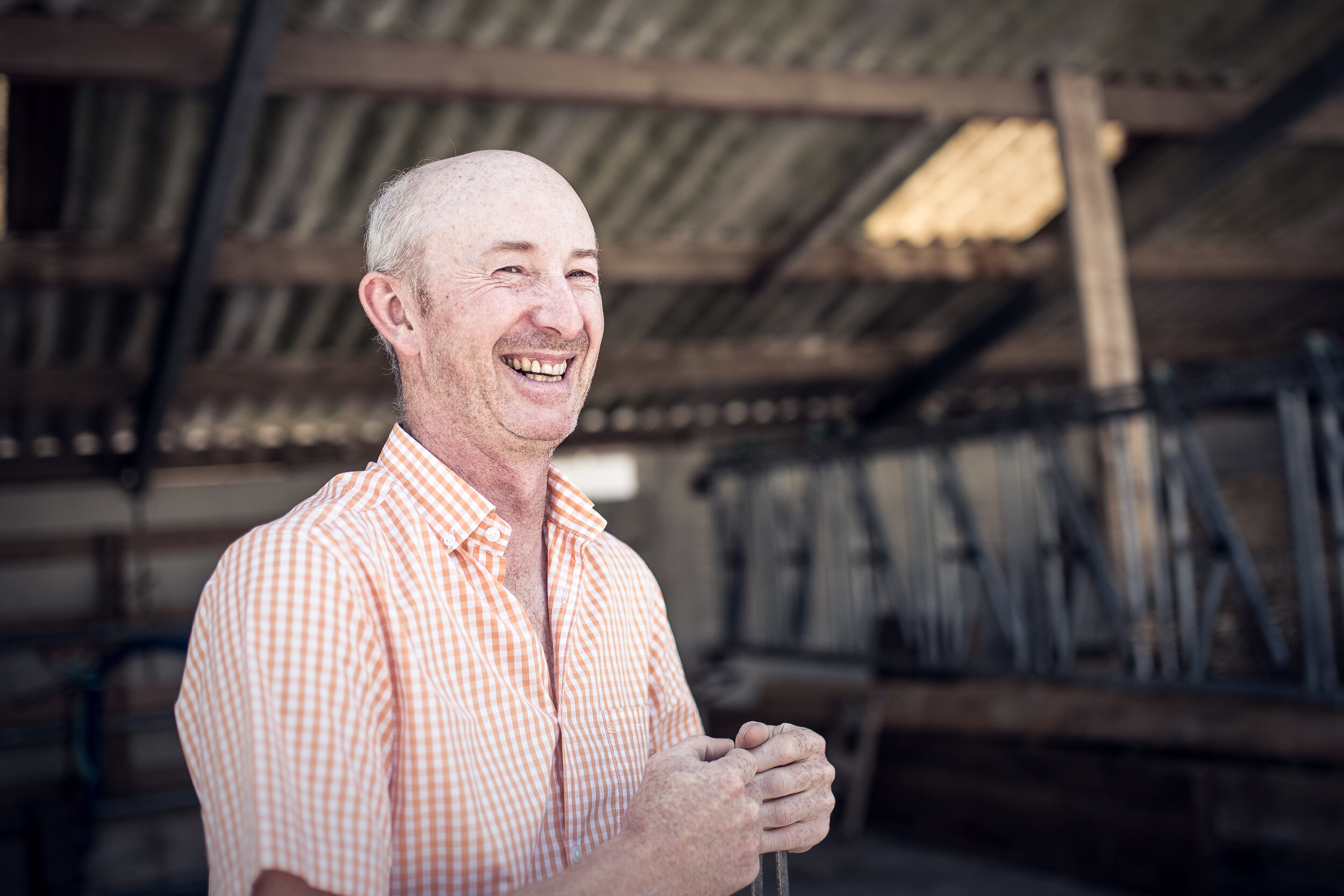
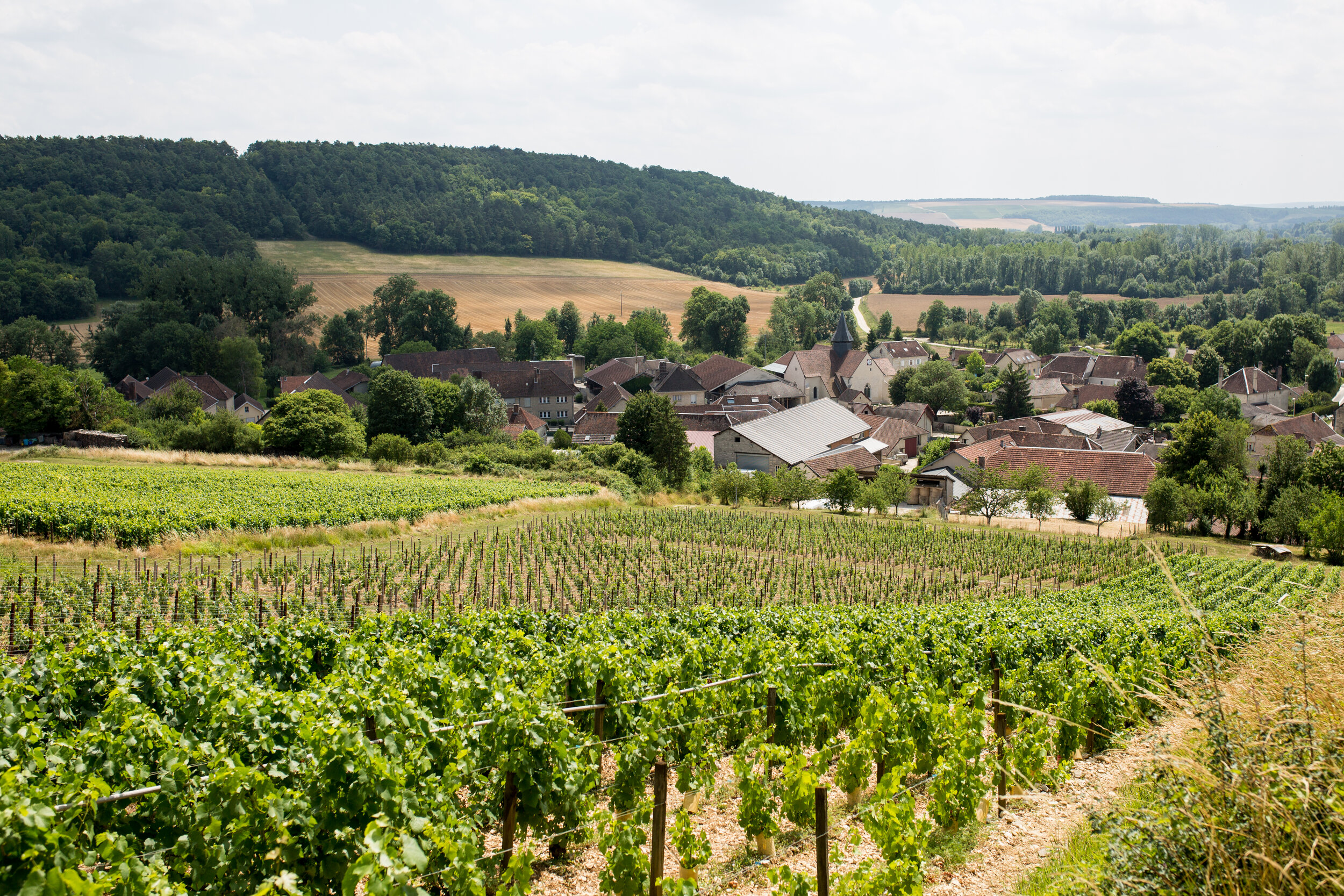

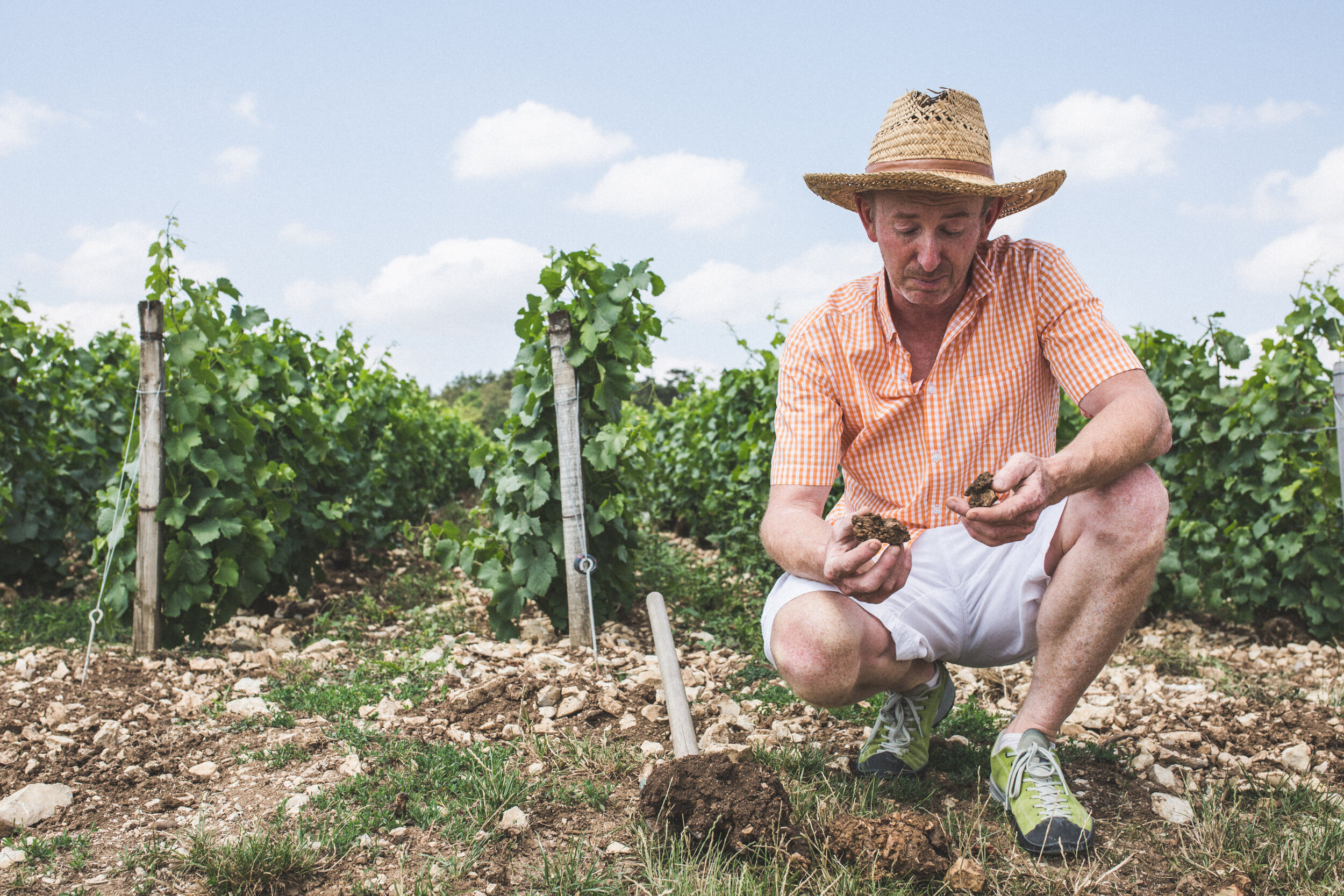
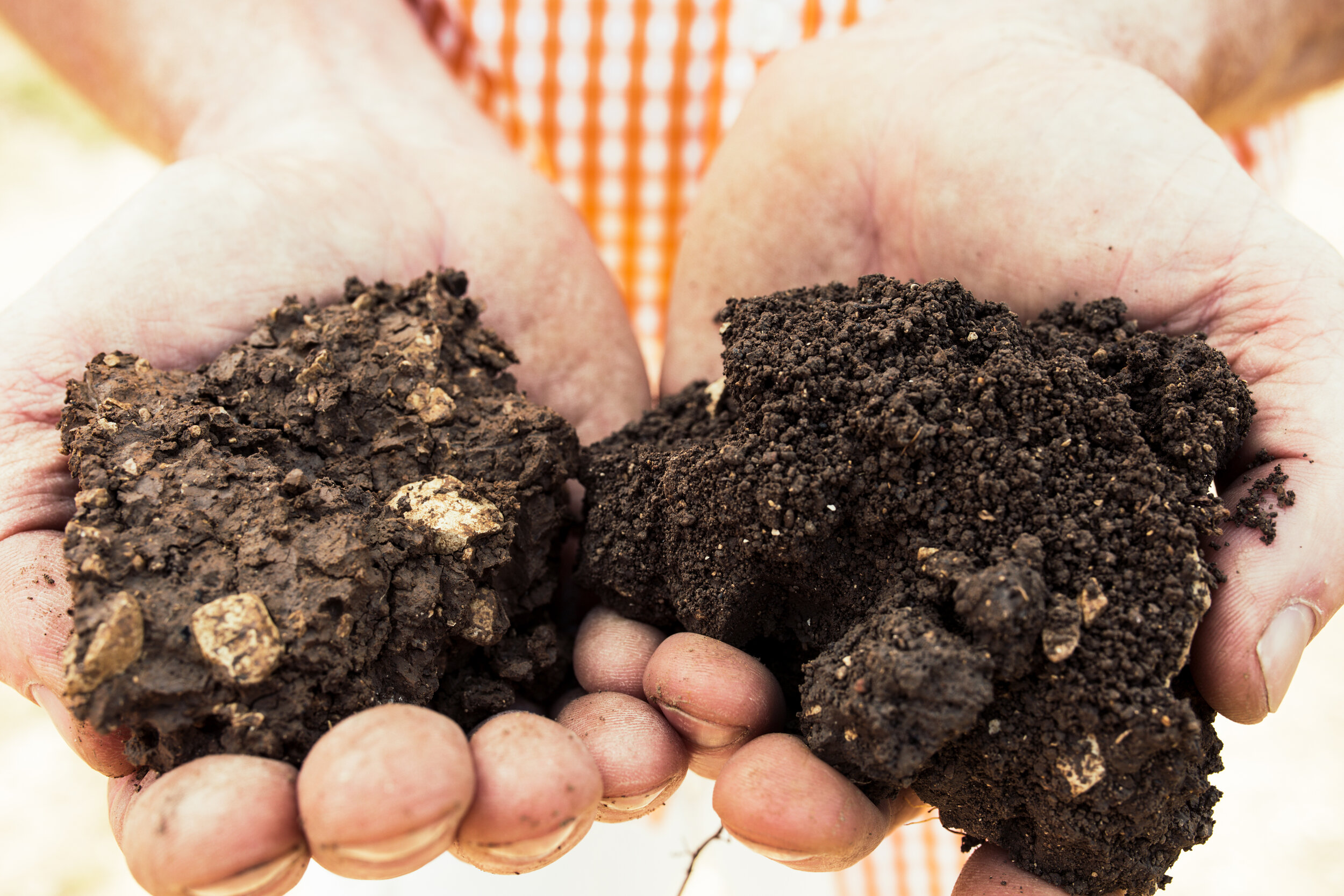
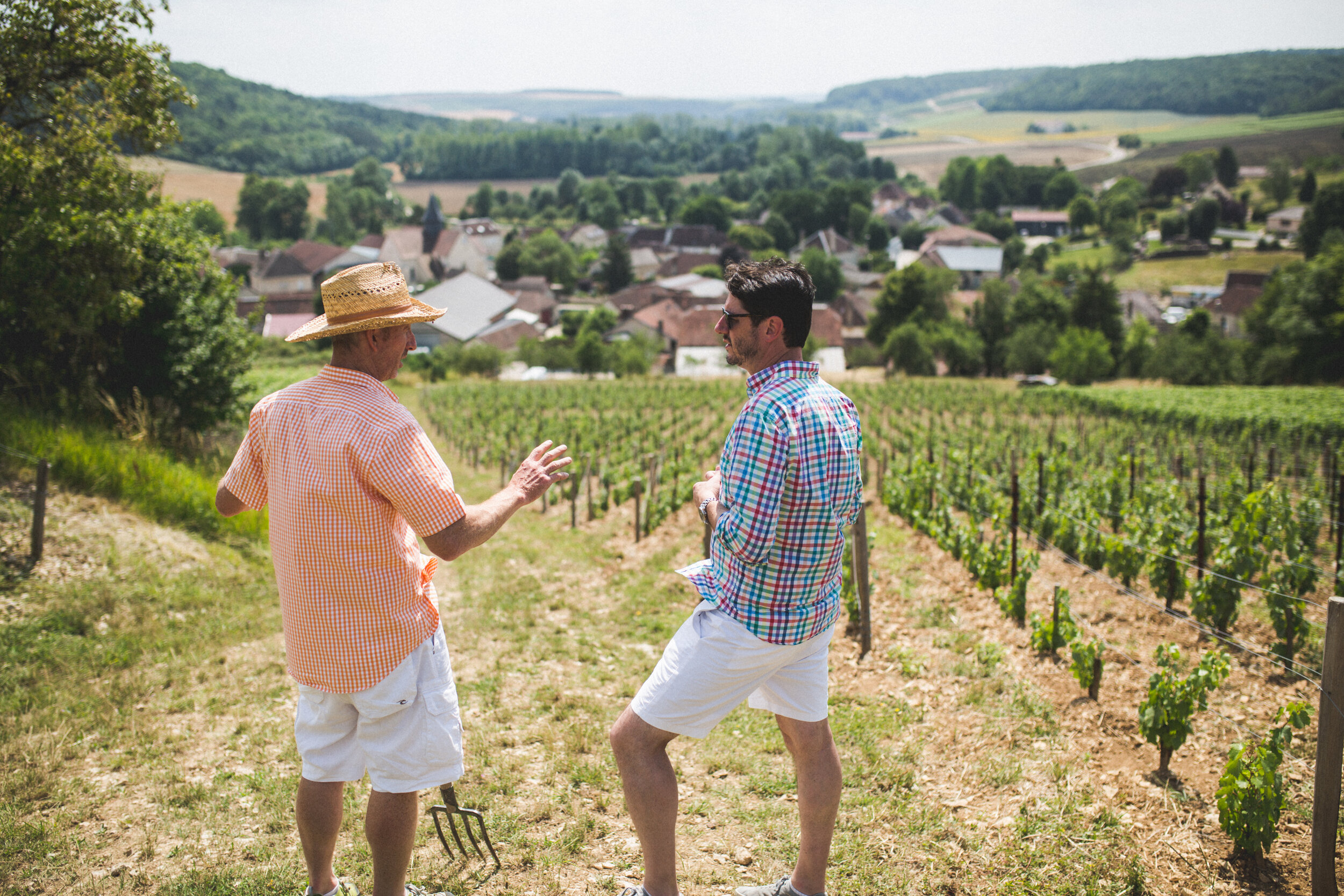
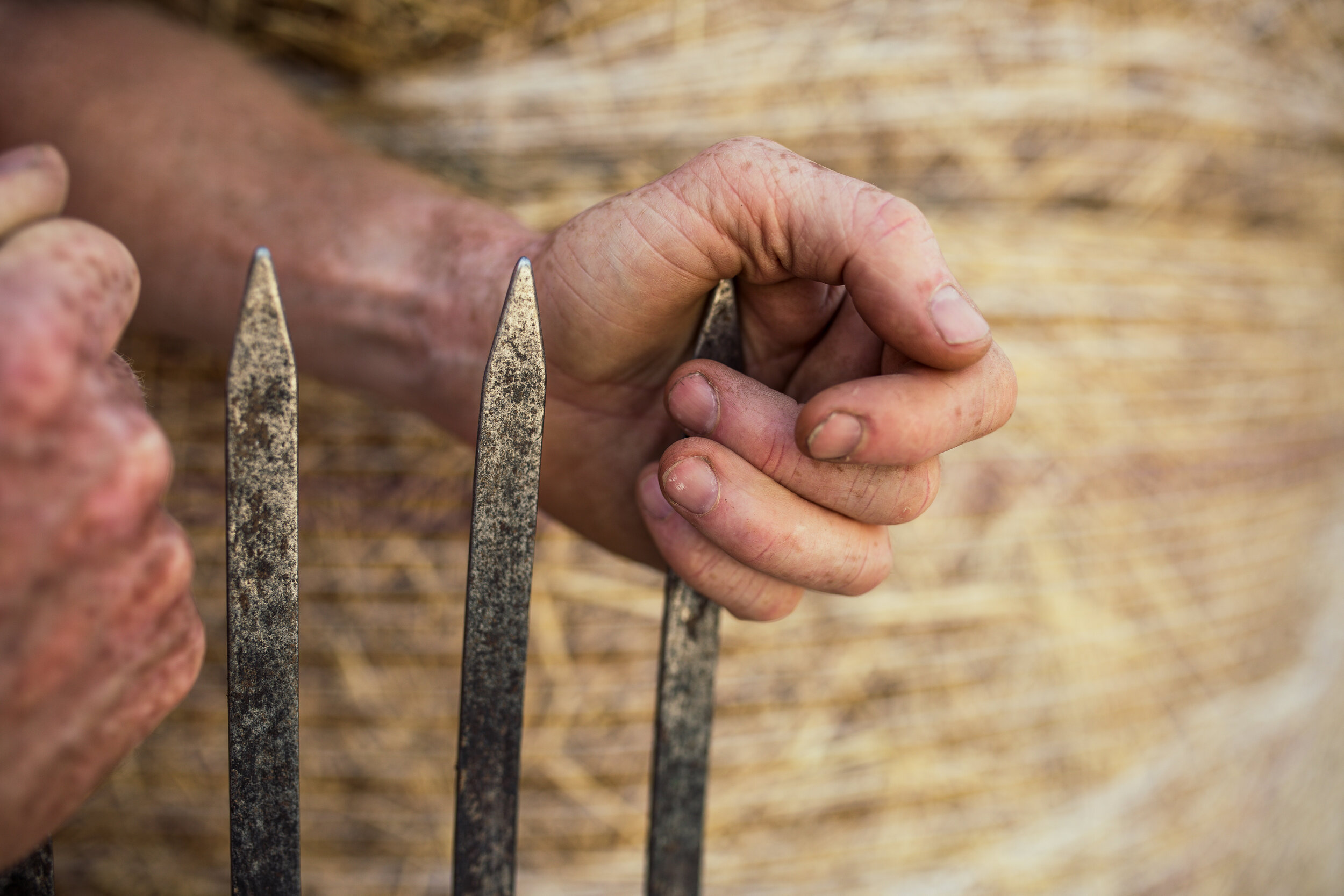
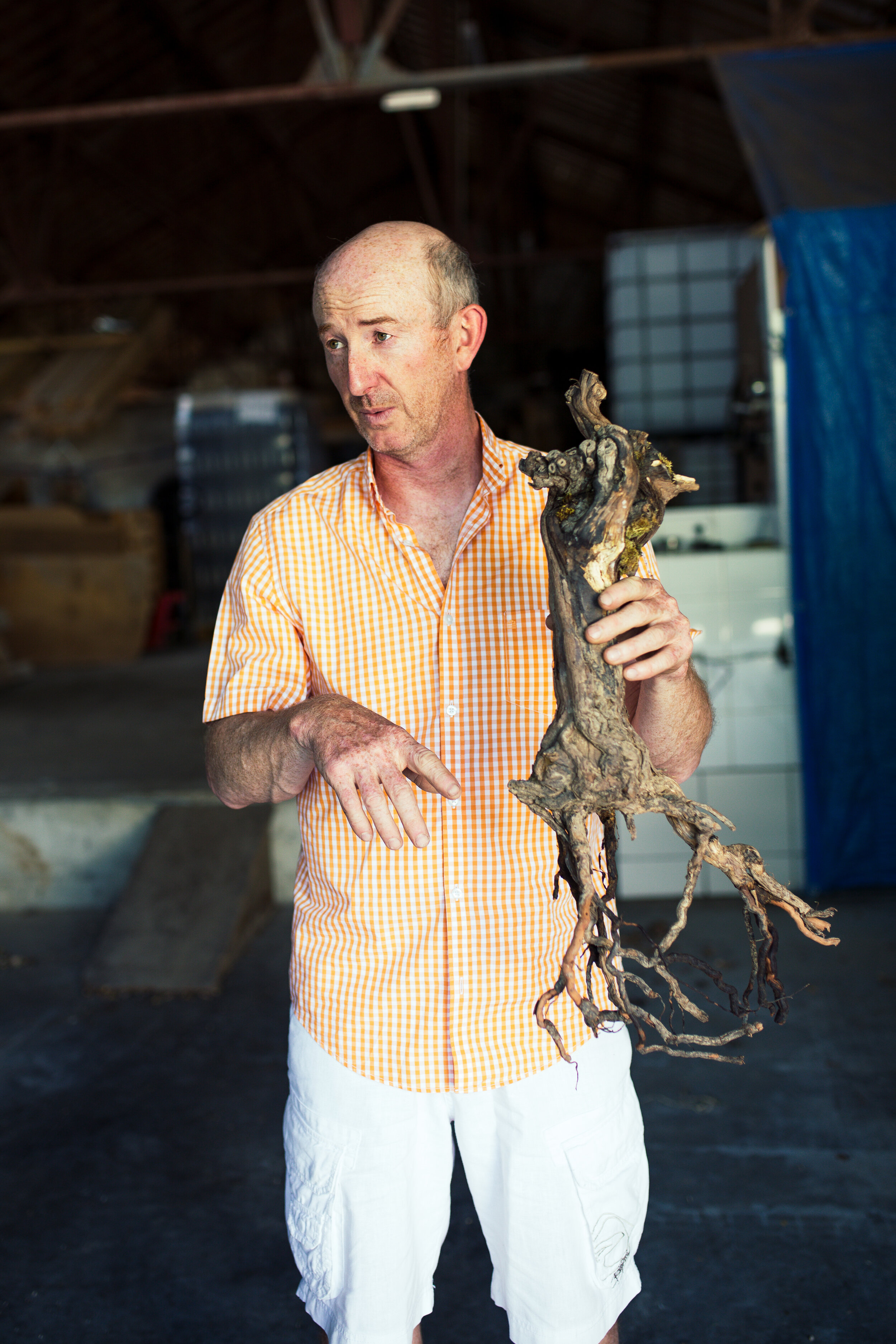

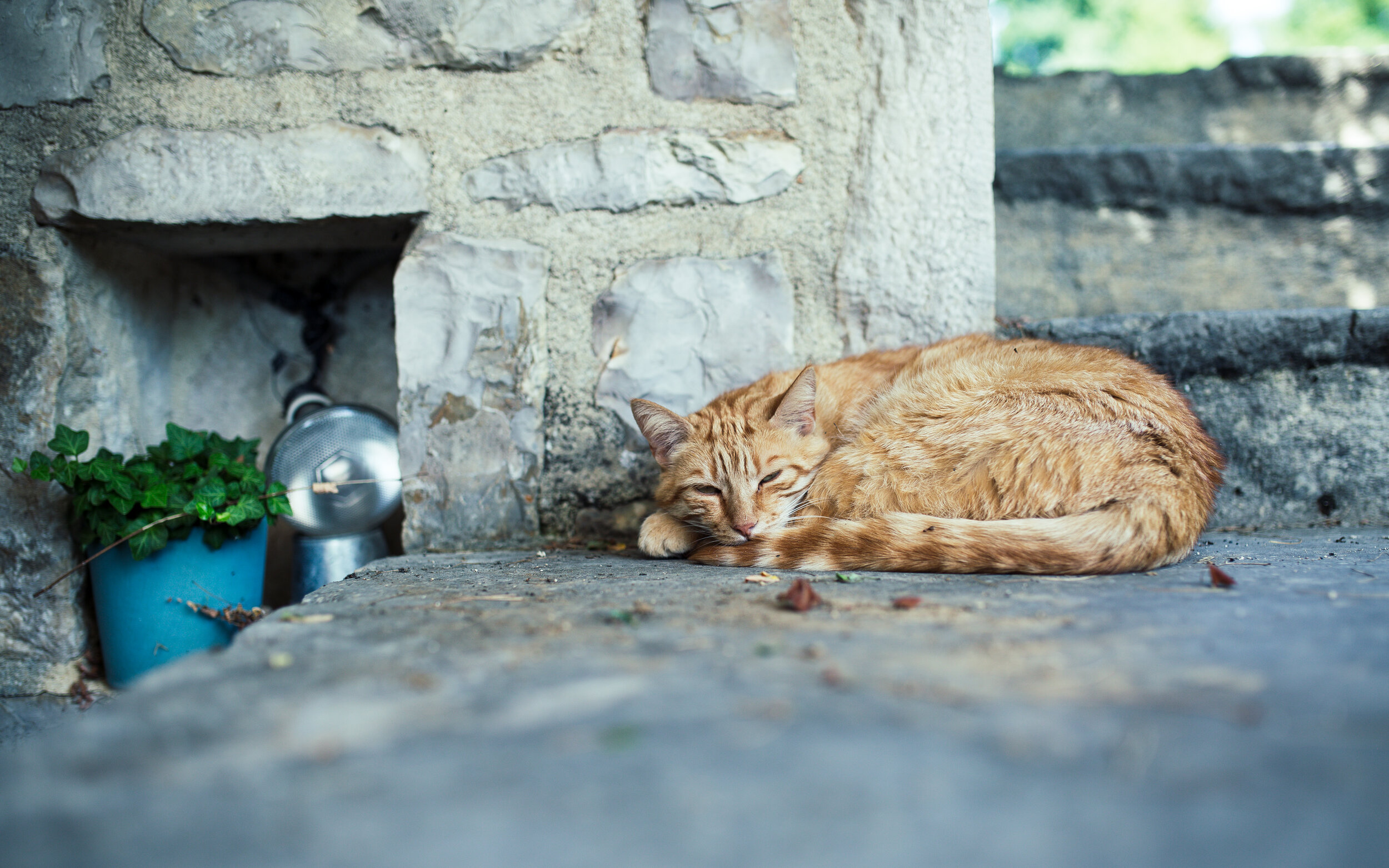
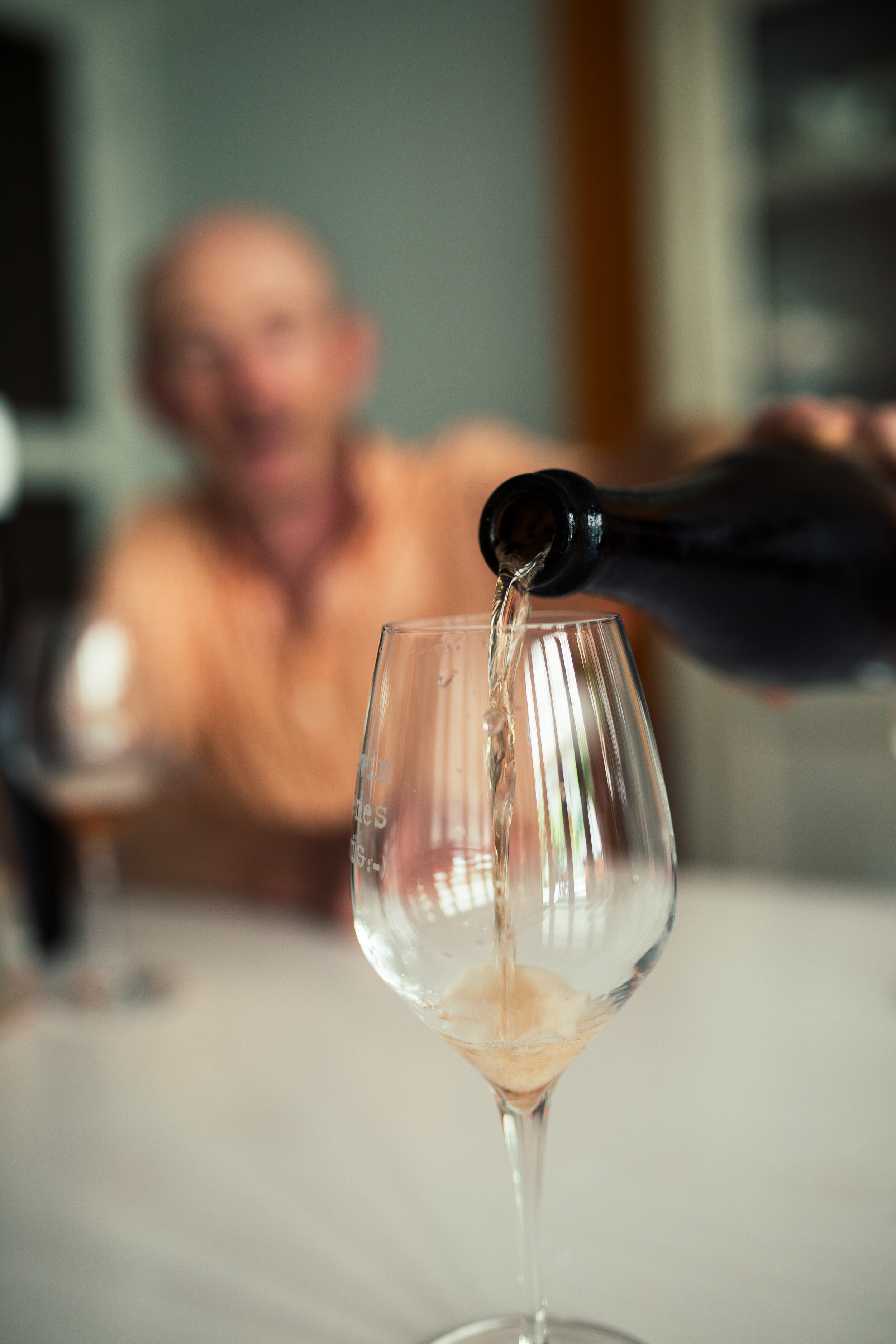
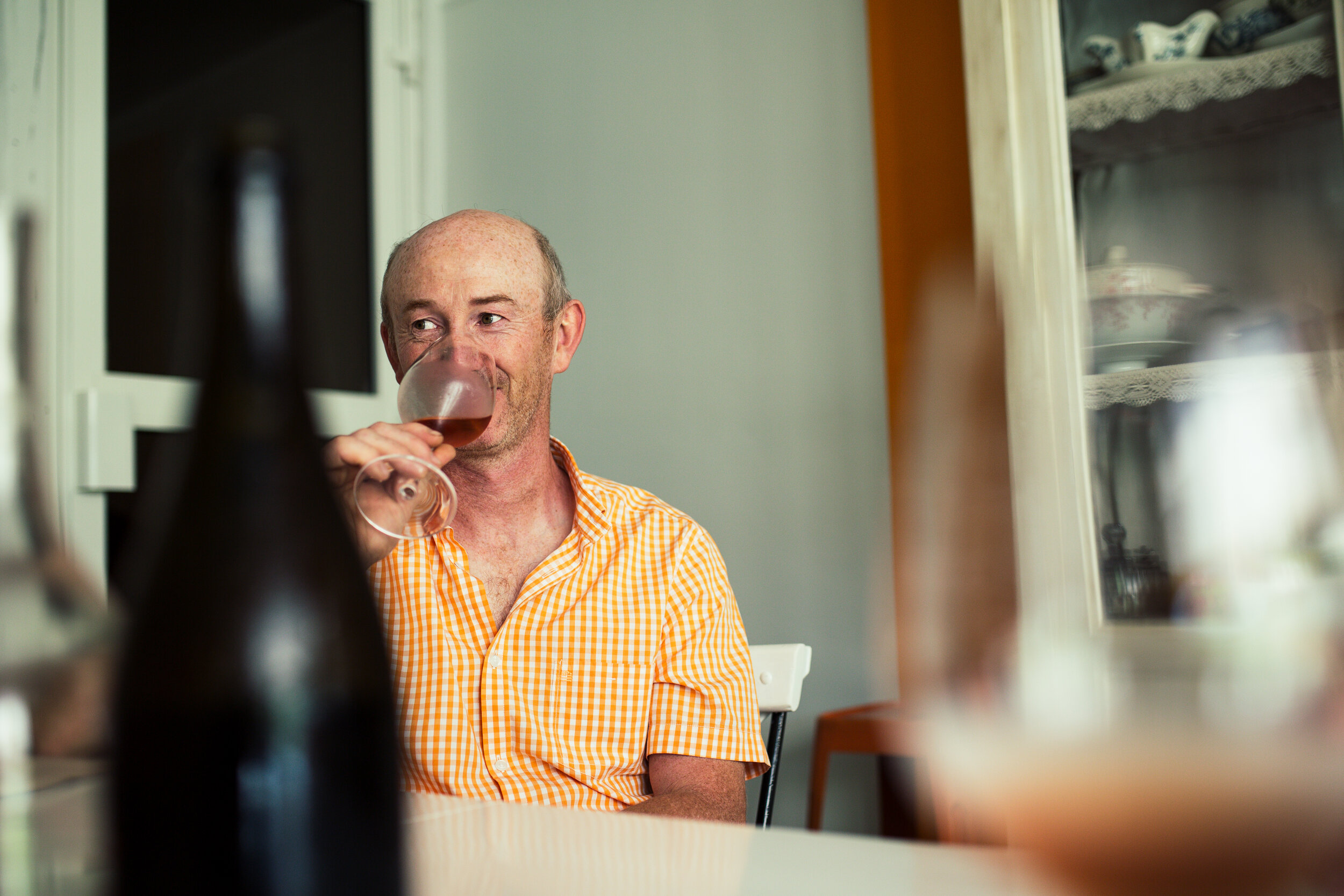
Champagne Vouette et Sorbée
Champagne Vouette et Sorbée does not operate a tasting room and receives visitors by appointment only.
